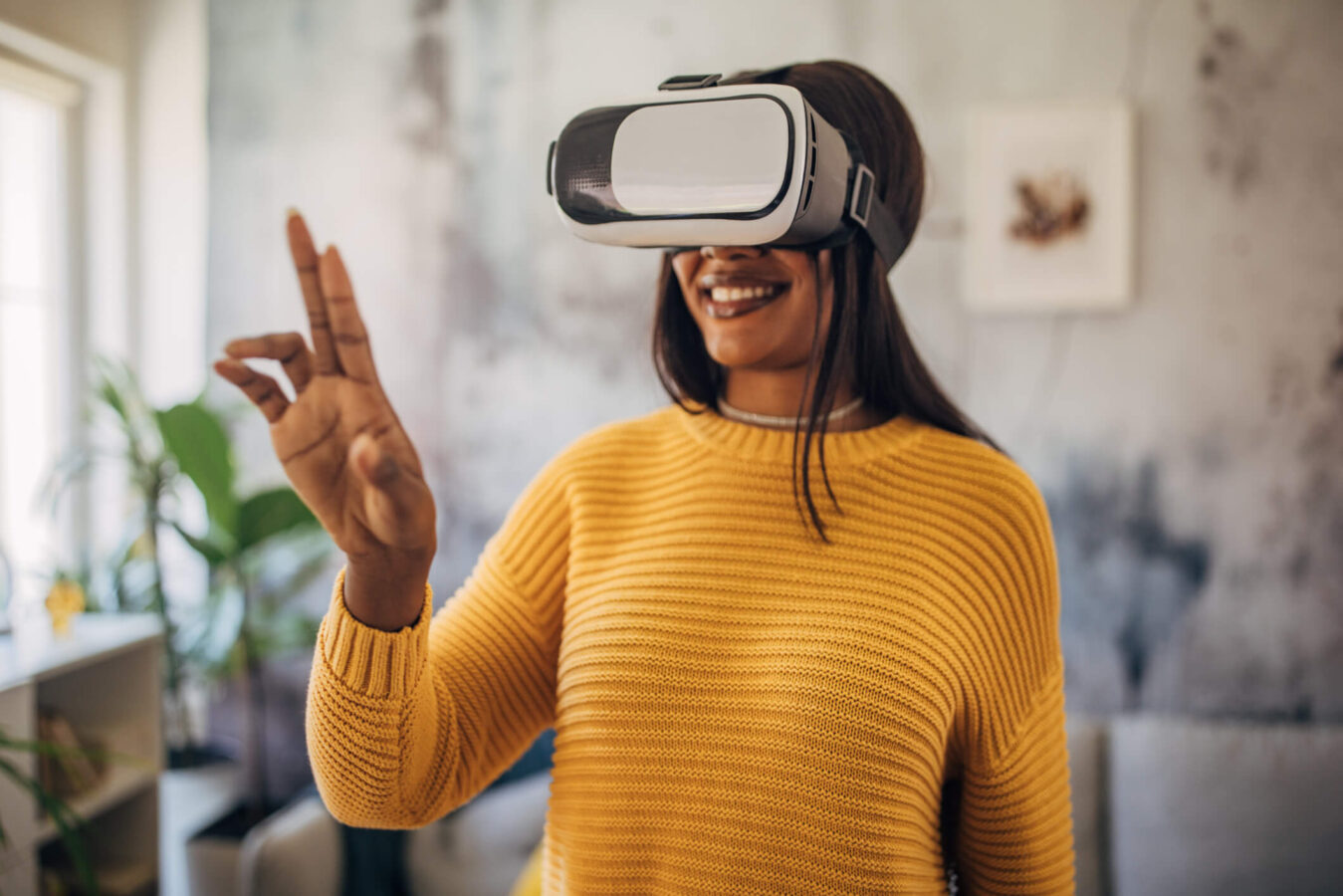
Medically reviewed by Misty Seidenburg
Virtual reality isn’t just for gaming. It’s quickly becoming a powerful tool in physical therapy. With immersive environments and interactive exercises, VR is changing what’s possible in rehab. From stroke survivors rebuilding motor control to seniors regaining balance, virtual reality physical therapy is helping patients engage more deeply in their recovery journeys.
Are you exploring your options for recovery or curious about what’s next in healthcare? Here’s a closer look at this innovative approach that’s helping patients improve mobility, manage discomfort, and move with greater confidence.
Virtual reality (VR) uses headsets and sensors to create simulated environments. This technology allows users to interact with a 3D world in real-time. In the healthcare setting, VR transforms passive therapy into an active experience. Patients don’t just follow instructions. They participate in engaging, goal-oriented tasks.
The key components of VR in physical therapy are:
By combining these tools, clinicians can create targeted therapies in virtual settings. Patients can walk through a park, reach for objects overhead, or balance on uneven terrain—all in the comfort and safety of their home or the physical therapy clinic.
Virtual reality physical therapy is being applied in a variety of innovative ways. From managing neurological conditions to treating balance problems and helping children with mobility limitations, VR adds layers of precision and engagement to support improvement and recovery across diverse needs.
Let’s take a closer look at some of the ways VR is helping patients make progress toward their physical therapy goals.
VR helps patients safely practice balance in scenarios that mimic real-life challenges like walking on uneven surfaces or navigating busy sidewalks. By gradually increasing the complexity of tasks, patients can build confidence in their ability to move through the world without falling. Therapists can also simulate risky environments in a safe and controlled manner.
VR helps patients build coordination, strength, and flexibility by turning exercises into interactive games. Real-time feedback enables therapists to adjust the difficulty based on progress. These programs are often designed to encourage specific movement patterns, supporting neuromuscular re-education and overall functional gains.
For conditions such as Parkinson’s disease or multiple sclerosis, VR can offer customized programs to help manage tremors, improve gait, and enhance stability. These exercises can also support cognitive engagement by requiring problem-solving and attention during movement. As a result, patients may benefit both physically and mentally from their sessions.
Immersive virtual environments, designed to be calming, soothing, or even simulate weightlessness, can help divert the brain’s attention away from pain, allowing users to focus more on the virtual experience than on their discomfort. Some VR programs also include guided narration and breathing exercises, helping users manage anxiety, reduce stress, and reframe negative thoughts that may worsen their perception of pain.
The advantages of VR physical therapy go beyond novelty. There are practical, patient-centered reasons this technology is gaining traction.
If you’re interested in virtual physical therapy, many clinics now offer hybrid options combining in-person and virtual visits.
When it comes to the impact of virtual tools in movement therapy, there’s more than just anecdotal evidence. Recent studies have examined how virtual reality (VR) physical therapy can support recovery and enhance patient engagement.
In 2024, researchers published a comprehensive review of existing literature on using VR as a diagnostic and intervention tool for physical therapy. They concluded that VR offers “notable benefits for patients struggling with gait and balance disorders, as well as those experiencing burns and phantom limb pain.”
Another study from 2021 highlights the benefits of VR specifically for patients who might not otherwise have access to weekly physical therapy sessions for various reasons. These patients, all with trauma-related lower extremity injuries, responded well to virtual care overall and gave VT high marks for feasibility and usability.
The American Physical Therapy Association (APTA) also offers a comprehensive collection of studies supporting VR integration in physical therapy for conditions that include:
While results vary based on individual cases and specific applications, current findings are promising and support further integration of VR into therapy programs.
If you are curious about this approach, knowing what to expect can help ease concerns and set realistic expectations.
A typical VR physical therapy session might include:
Virtual physical therapy may be combined with other treatments and modalities for a holistic approach. Every session is designed to be collaborative, adaptive, and, most importantly—patient-focused.
Virtual reality rehabilitation is entering a new era, where digital innovation is expanding the scope and effectiveness of therapy. With immersive environments and real-time data, these tools are reshaping how patients engage in and respond to treatment.
Whether recovering from surgery, managing a chronic condition, or seeking new options for neurological physical therapy, VR offers a unique path forward. You deserve a recovery journey that’s supportive, engaging, and tailored just for you. Discover how VR can help you take the next step—literally and figuratively—toward better health and wellness.
Interested in learning more or trying it for yourself? Request an appointment at a nearby clinic and experience how virtual reality is changing the face of physical therapy.
